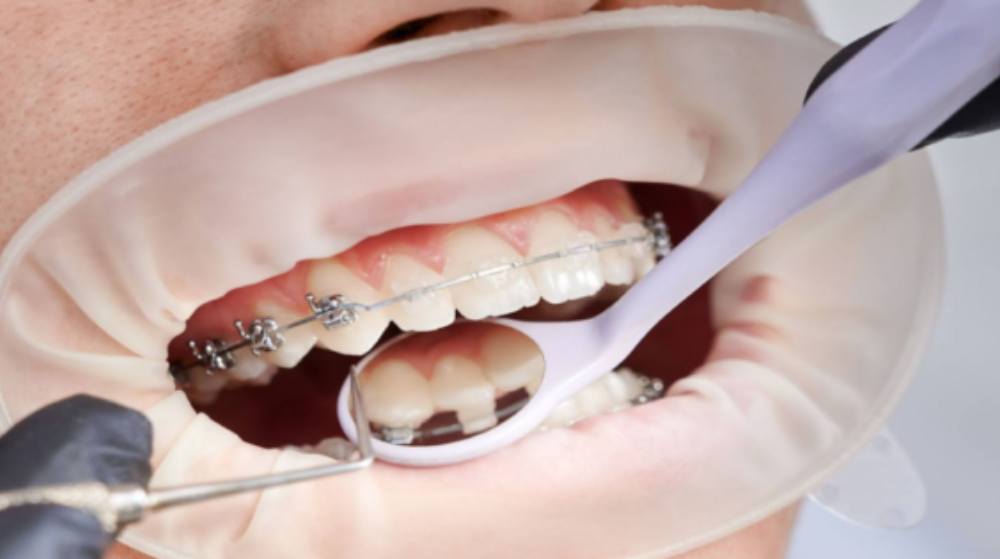The lightening of the colour of a tooth through the application of a chemical agent to oxidize the organic pigmentation in the tooth is referred to as bleaching.
What’s the difference between teeth whitening and teeth bleaching ?
According to ADA (American Dental Association), there is a difference. A whitening process for teeth is the process of removing stains from the tooth surface while restoring the natural color of the tooth.
Bleaching teeth refers to whitening teeth beyond their natural color. Active ingredients like hydrogen peroxide and carbamide peroxide are bleaching agents commonly used.
While ADA has defined the differences between whitening and bleaching , often the terms are used interchangeably.
Whitening of the teeth can be done in many ways
Whitening toothpastes – Whitening toothpastes contain mild abrasives but do not contain bleach. Whitening toothpastes can lighten the tooth color by about one shade.
Over the counter whitening strips and gels– whitening gels are peroxide based gels applied with a small brush to the surface of teeth. Instructions vary according to the strength of the peroxide. Patient’s need to follow the instructions on the product carefully.
Whitening strips –are thin virtually invisible strips that are coated with peroxide gel.
Whitening rinses – these are among the newest products available. They are just like the other mouthwashes but also contain hydrogen peroxide. Manufacturers say that 12 weeks are required to see results , however experts say that it may have less of an effect as the rinse is in contact with the teeth for only 2 mins.
Tray based whiteners– they are available OTC(over the counter ) or given by the dentist. They involve filling of a mouth guard like tray with a gel whitening solution which contains peroxide bleaching agent . The tray is worn for a period of time , generally from a couple of hours a day to every day during the night for upto 4 weeks or even longer.
Mouthpiece trays – With dentist supervised at home bleaching products , your dentist will take an impression of your teeth and make a mouthpiece tray that is customized to exactly fit your teeth. A custom made tray also minimizes gel’s contact with the gum tissue.
OTC whitening products provide a tray but “ one-size-fits-all” approach means that the tray fitting will not be exact. Such ill-fitting trays may irritate the gum and soft tissues by allowing bleaching gel to seep into the tissues.
In office whitening– this is the quickest way .The whitening product is directly applied to the teeth. These products can be applied in combination with heat or laser or a special light. Results are seen in only 30-60 minstreatment.Several appointments may be needed to achieve dramatic results.
New Technology Used Nowdays
Laser Teeth Whitening
In laser teeth whitening heat from a special laser is used along with the bleaching gel. It activates the gel .
However there is a risk of overheating the teeth.This can lead to nerve damage.If done properly this method can yield results similar to zoom.
Zoom Teeth Whitening
Zoom is a brand name. Is also a better option as the light usedcan reach all the teeth at one time. The light used also filters out infrared energy so the teeth aren’t exposed to as much heat as with laser whitening .Zoom is a speedy process compared to regular whitening.
Additional Protective Measures
In a dentist’s clinic your dentist will use a rubber dam(protective shield) for your gums prior to the treatment to protect your gums and oral cavity from the effects of bleaching.OTC products don’t provide these measures. Your dentist will see you a couple of times to clear up any questions so as to make sure the customized tray fit properly to check your gums for signs of irritation and to generally watch how the process is working. With OTC you are on your own !
Should you whiten your Teeth ?
First your dentist will perform an oral examination and consider your complete medical history which can be helpful in determining if bleaching is an appropriate course of treatment.
Bleaching is not recommended in following-
1) In children under 16 years of age as the pulp chamber can get irritated due to whitening.
2) Pregnant and lactating women.
3) Bleaching is also not recommended in case like if anyone is allergic to peroxide or other allergies / if teeth sensitivity is there/ receeding gums / defective restorations/gum diseases /worn enamel/exposed roots/cavities are there.
Risks associated with whitening?
2 Common side effects are sensitivity of the teeth and irritation of the gums / soft tissues. Tooth sensitivity often occurs during early stages of the treatment. Tissue irritation occurs from an ill- fitting tray rather than a bleaching agent. These conditions are temporary and disappear after stopping the treatment /on completion of the treatment.
At smilex We have a good team of experienced doctors and teeth whitening is carried out using the latest technology and best materials.




